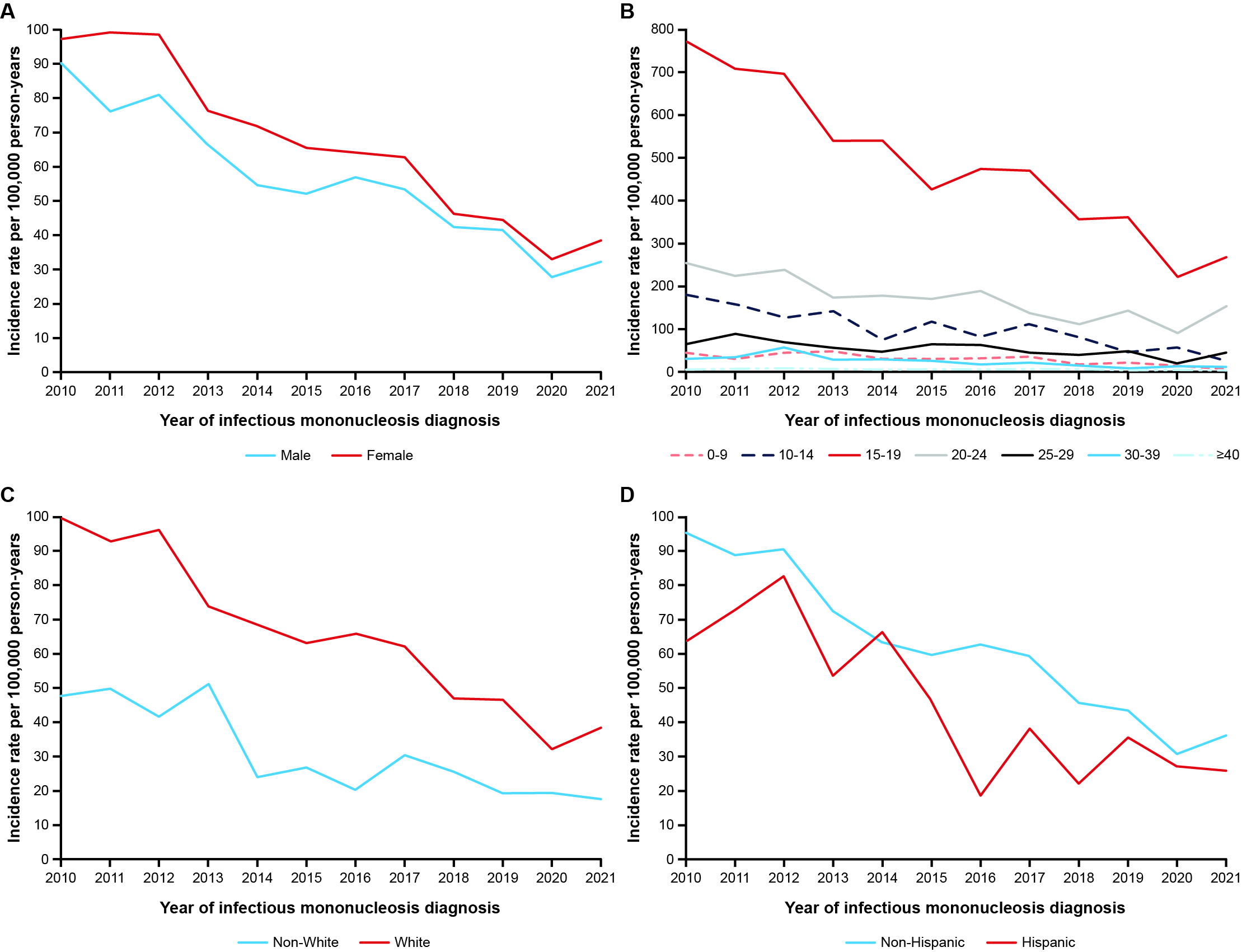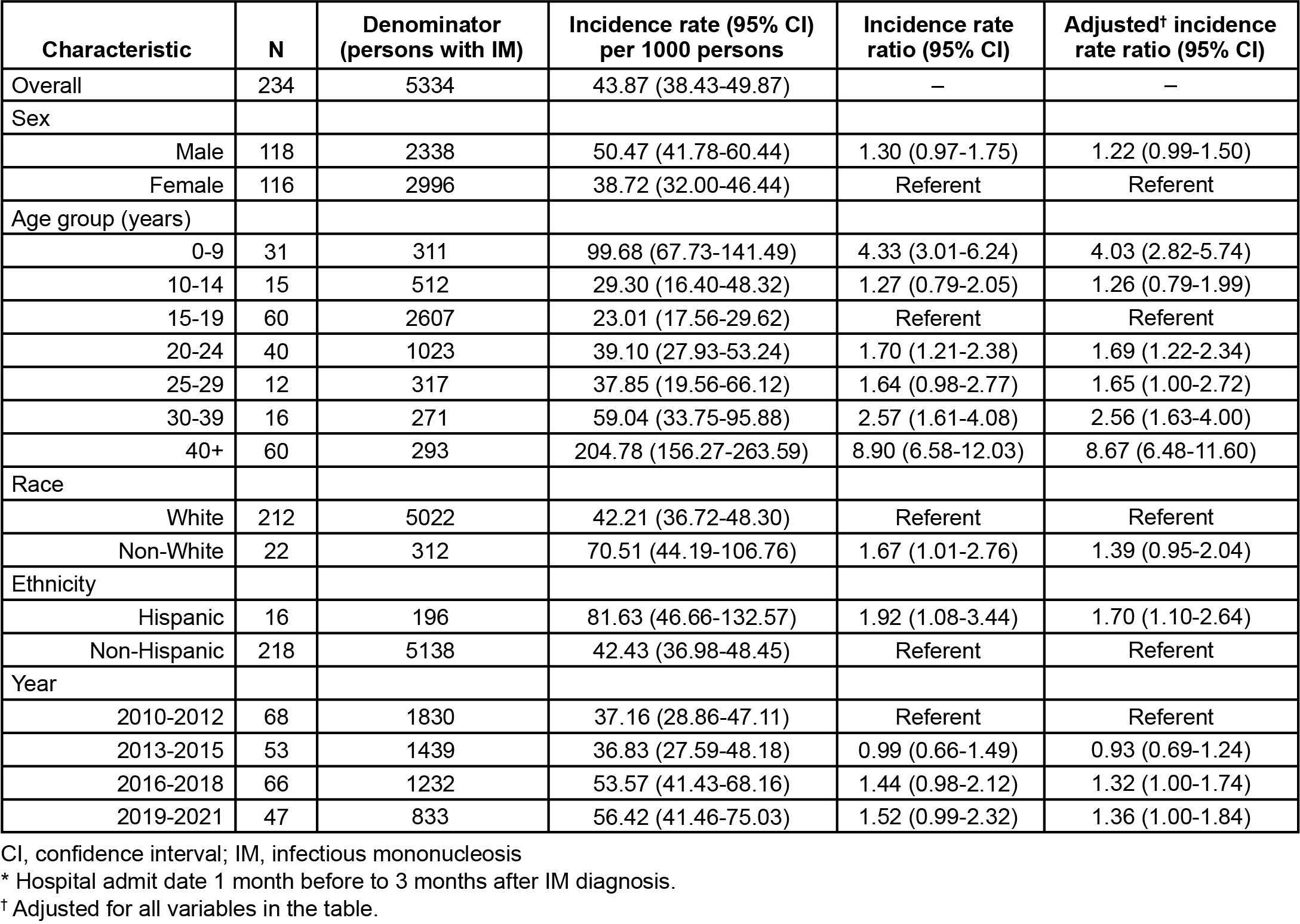Infectious Diseases
Infectious Diseases 2
636 - Incidence of Infectious Mononucleosis and Associated Hospitalizations Between 2010 and 2021 in an Upper Midwest Population
Publication Number: 636.226

Susan A. Hall, PhD
Director, Lead Epidemiologist, Infectious Diseases - Early Stage Vaccines
Moderna, Inc.
Cambridge, Massachusetts, United States
Presenting Author(s)
Background:
Data on the seroprevalence of Epstein-Barr virus (EBV) infection suggest that the age at first infection with EBV may be increasing over time. Changes in age at first EBV infection may result in changes in the incidence of infectious mononucleosis (IM) and complications due to IM. However, current data on IM incidence and IM-associated complications in the United States are not available.
Objective:
To describe the incidence of IM and IM-associated hospitalizations between 2010 and 2021 in a population-based sample of the upper Midwest.
Design/Methods:
Individuals with a diagnosis code for IM (ICD-9: 075; ICD-10: B27) and residing in a 27-county region of the upper Midwest between 2010 and 2021 were identified using the Rochester Epidemiology Project (REP). Inpatient hospitalizations with a primary or secondary diagnosis code for IM 1 month before to 3 months after the IM diagnosis date were also identified using the REP. Rates of IM were calculated assuming the entire population between 2010 and 2021 was at risk, and rates of IM-associated hospitalizations were calculated among all people with a diagnosis of IM. Poisson regression was used to test trends over time and to estimate hospitalization rate ratios.
Results: 5334 individuals were identified with IM; the overall IM rate was 60.60/100,000 person-years (95% CI, 58.98-62.25). Rates were higher in females compared with males, in White compared with non-White individuals, in non-Hispanic compared with Hispanic individuals, and in individuals 15 to 19 years of age compared with all other age groups (all P < 0.05). IM rates decreased significantly over time among all age groups (Figure; all tests for trend, P < 0.05). Overall, 234 individuals (4.39%) were hospitalized with IM (43.87/1,000 persons with IM; 95% CI, 38.43-49.87), and hospitalization rates increased over time (Table; test for trend, P < 0.05). After adjusting for other characteristics, individuals < 10 years of age, individuals ≥ 20 years of age, and individuals of Hispanic ethnicity were at an increased risk for IM-associated hospitalization
Conclusion(s): While rates of IM diagnosis have decreased over time, risk of hospitalization in individuals with IM has increased. In addition, age and ethnicity increase the risk of hospitalization due to IM. Funded by Moderna, Inc.

